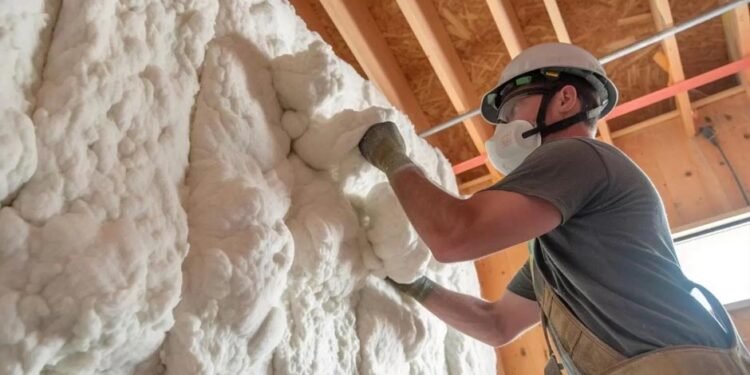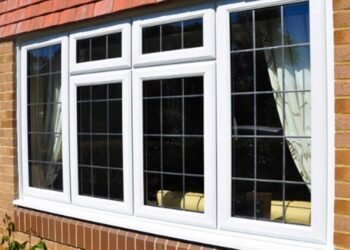Spray foam insulation has revolutionized the way we think about energy efficiency and comfort in buildings. From residential homes to commercial structures, its versatility and effectiveness make it a popular choice among builders and homeowners alike, notes the Evolve Nevada management team. Here, we will explore everything you need to know about spray foam insulation, including its benefits, applications across different sectors, and essential installation considerations, as noted by Profoam Corporation.
What is Spray Foam Insulation?
Spray foam insulation is a type of insulation material that is sprayed onto surfaces as a liquid. It expands into a foam, creating a seamless barrier that effectively seals gaps, cracks, and joints. This insulation method is known for its high thermal resistance, which helps maintain indoor temperatures and reduces energy consumption.
Types of Spray Foam Insulation
There are two main types of spray foam insulation: open-cell and closed-cell. Each type has unique properties that make it suitable for different applications. Understanding the differences between these types can help you choose the right insulation for your project.
Benefits of Spray Foam Insulation
Spray foam insulation offers a wide range of benefits beyond its thermal resistance. From improved indoor air quality to structural reinforcement, here are the key advantages of using spray foam insulation in your building projects.
Applications of Spray Foam Insulation
Spray foam insulation is incredibly versatile and can be used in various applications. Whether you are renovating a home or constructing a new commercial building, explore how spray foam insulation can be applied effectively in different scenarios.
Factors to Consider Before Installing Spray Foam Insulation
Several factors need to be considered before proceeding with spray foam insulation installation. These include environmental conditions, building codes, and the expertise of installers. Addressing these factors ensures a successful and durable insulation solution.
Steps Involved in Spray Foam Insulation Installation
The installation process of spray foam insulation requires precision and expertise. Here’s a step-by-step guide outlining the typical procedures involved in applying spray foam insulation to different surfaces and structures.
Cost Considerations and Return on Investment
Understanding the costs associated with spray foam insulation and its long-term benefits can help you make an informed decision for your building project. Explore the initial investment, potential savings on energy bills, and the return on investment over time.
Maintenance and Longevity of Spray Foam Insulation
Proper maintenance is essential to maximize the lifespan and effectiveness of spray foam insulation. Learn about maintenance practices and how to ensure your insulation continues to perform optimally for years to come.
Benefits of Spray Foam Installation
Spray foam insulation offers a range of benefits that contribute to energy efficiency, comfort, and structural integrity in buildings. Here are 15 key benefits of spray foam insulation:
- Superior Insulation: Spray foam creates an effective thermal barrier that minimizes heat transfer, reducing energy consumption for heating and cooling.
- Air Sealing: It seals gaps, cracks, and joints, preventing air leakage more effectively than traditional insulation materials like fiberglass or cellulose.
- Moisture Barrier: Closed-cell spray foam acts as a moisture barrier, helping to prevent mold and mildew growth by reducing moisture infiltration.
- Structural Support: It adds structural strength to walls and roofs, enhancing overall building integrity and durability.
- Noise Reduction: Spray foam insulation can significantly reduce noise transmission through walls, floors, and ceilings, improving indoor acoustics and privacy.
- Longevity: Properly installed spray foam insulation can last for the lifetime of a building, requiring minimal maintenance.
- Saves Space: Compared to traditional insulation materials, it occupies less space for the same R-value, maximizing usable floor area.
- Versatility: Spray foam can be applied to various surfaces, including irregularly shaped areas and hard-to-reach spaces, ensuring comprehensive coverage.
- Environmental Benefits: It can contribute to lower greenhouse gas emissions by reducing energy consumption, making it environmentally friendly.
- Improved Indoor Air Quality: Spray foam insulation reduces air leakage, helping maintain consistent indoor temperatures and filtering out airborne pollutants.
- Seamless Application: When properly applied, spray foam insulation forms a seamless barrier that adheres to surfaces without gaps or seams.
- Reduced HVAC Sizing: Spray foam’s superior insulation properties may allow for downsizing HVAC equipment, saving installation costs.
- Fire Resistance: Some types of spray foam insulation have fire-resistant properties, enhancing building safety.
- Adds Property Value: Energy-efficient homes with spray foam insulation can command higher resale values and attract environmentally conscious buyers.
- Cost Savings: Despite the initial higher cost compared to traditional insulation, spray foam insulation can deliver long-term savings through reduced energy bills and maintenance costs.
In conclusion, spray foam insulation stands out as a superior choice for achieving energy efficiency, comfort, and durability in buildings of all types. Its ability to seal gaps effectively and provide superior thermal resistance makes it a valuable investment for homeowners and businesses alike. By understanding its benefits, applications, and installation considerations, you can make an informed decision to enhance the efficiency and comfort of your living or working space.












